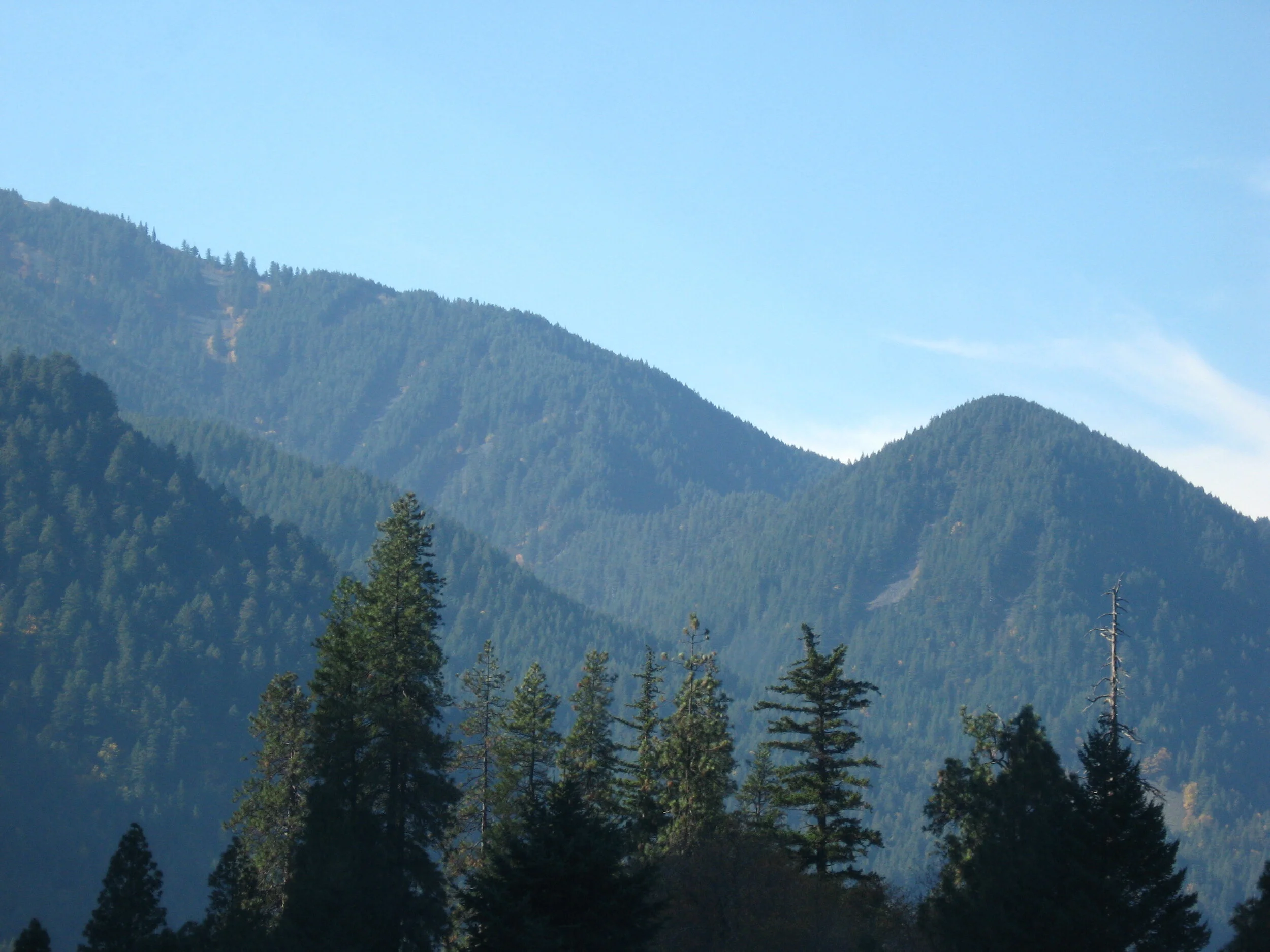Forests
Our Forests
The greater Columbia River Gorge – the rivers and peaks between Mount Adams and Mount Hood – boasts a wonderland of forests, not just with the amount of trees, but the kinds of forest communities. And while many people think of Douglas-fir (aka “red fir”) as the prime tree in the area, and they are both valuable and wide-spread, there are all sorts of forests here. Within a short drive, or sometimes even on a single hike, one can wander through tall, rain-drenched fir forests of the Cascade Mountains foothills, over streams shaded by alders, hemlocks and red-cedars, and across rocky slopes with maples and ponderosa pine.
In terms of wildlife habitat, the humble oak tree is the star, supporting more than 400 species of birds, mammals and insects. There is a single species of native oak tree here, Quercus garryana, variably called white oak, scrub oak, Oregon oak and Garry oak. On rocky thin soils, it often grows in elfin rings or small, twisty-limbed patches hunched against the wind. On bottomlands where there is deeper soil and more water, even in dry locales like The Dalles, the same oaks grow large, spreading their limbs out in graceful umbrellas. Dropping these limbs under loads of ice or wind yields cavities, where all owls, squirrels, bobcats and all manner of other animals make homes. The Oregon oak lives in the Willamette and Puget Sound valleys, and through the Gorge – even in the middle of the Cascade Mountains, for example, on steep ledgey canyon slopes of the lower Wind River.
The graphic to the right shows the dominant forest communities in the greater Columbia Gorge.
Forest Ecology
Besides displaying the area’s biodiversity, the graph above illustrates a truth: All native, wild species grow in particular places, where they are most competitive. Some trees that have been denigrated are less commercially valuable, true, but grow where they do because they are successful and adapted to it. Those grand fir in the understory, or the twisty vine maple that can grow dense and treacherous to off-trail travel? They have been inconvenient at times, but they’re survivors bred over long, long times.
Forests are communities. Like human communities, they have different members, who are sometimes in conflicts or competition and sometimes live in harmony. And much of these interactions are still sort of mysterious to us. There are different layers of life and canopies, too.
Forests can generally be thought to have several layers: A root layer or rhizosphere in the soil; the flowers, grasses and vines at ground level; a shrubs layer (think of tall Oregon grape or salal, hazel and hawthorn bushes, etc.); an understory canopy, of immature trees and species adapted to lower light conditions, such as Pacific dogwood; and the over-story canopy: those tall Douglas-fir or ponderosa pines towering over all. How vigorous each layer is depends on the forest’s history and condition, its soil and water and light, whether it’s been logged recently or a long time ago or never, the slope where it grows, and other factors. A forested area next to a Cascades stream won’t look the same as one high on the slopes of Mount Adams!
Getting to know a handful of native trees and shrubs is a great idea: It’s so much more rewarding to recognize a stand of western red-cedar, say, than to simply see a mass of greenery. The local chapters of the Washington Native Plant Society and Native Plant Society of Oregon put on monthly meetings and occasional programs that might be of interest and are a great way to meet other native plant enthusiasts. Several useful books are also available to help you identify our local flora--Trees to Know In Oregon, from Oregon State University Extension, is a full-color guide to both native and ornamental trees in our area. A similarly helpful title is Shrubs to Know in Pacific Northwest Forests, by the same author and also full-color. A good free guide is Trees of Washington, published by Washington State University Extension, and available as a .pdf file. UCD also has many native plant books available for reference in the office, please stop by if you have an identification question!
Forests are dynamic places, full of life and changing conditions as the ecological communities respond to fire, landslides and other disturbances. Much of our natural wealth is built on these forest communities, from the standing wealth of commercial forests to the saturation of precipitation that stores clean water. The wildlife around us, too, depends on these communities. The iconic steelhead and salmon of our streams, even. Yes: Fish need trees. Streamside trees shade and cool the water; their roots hold streambanks together; their leaves and litter form the basis of the aquatic food-web; and when a tree falls into the water, the log provides cover to juvenile fish and hydraulic habitat in the form of pools, which are very important to wild fish. If you own streamside land, one of the best things you can do for the ecosystem is leave the trees to grow, and eventually fall in. In past decades, land managers were encouraged to “clean up” streams, but we know now that fish need trees and logs in the streams.
This forest diversity – of tree communities, streams and wildlife – can seem messy to human eyes. For wildlife, messiness generally means food and shelter. It’s this messiness that provides niches for many different organisms to live and thrive. Keeping forest diversity intact, and where possible connected in big wild patches, is important today, and will become even more important in coming decades. No one is certain how forest communities will adapt to drier, warmer conditions in the changing climate. We have all seen trees under stress from the recent years of drought. It may be that this stress and loss of trees around us is a pattern of conditions to come.


